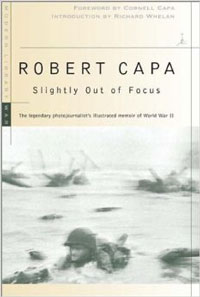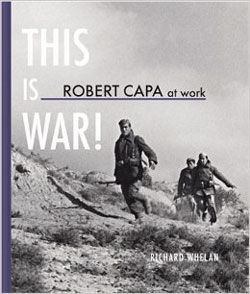Robert Capa, the greatest war photographer of the last century, was also a shrewd storyteller – and not just with the camera. His images of war and crisis areas went around the world, especially his photograph of the Falling Soldier. The image that shows a Spanish freedom fighter at the moment of his death has become an icon of war photography. It was shot in 1936 during the Spanish Civil War and made the young photojournalist famous overnight. It had been claimed by British journalist and historian Phillip Knightly in the 70s that Capa had set up one of his most famous photographs and falsified the scene. The accusation resurfaced in 2009. The suspicions tarred Capa’s reputation to this day. Of course he couldn’t speak up to defend himself. That is, until today. “That was probably the best picture I ever took”, he says in a recently discovered interview. “I never saw the picture in the frame because the camera was far above my head.”

To listen to this radio interview that is the only existing recording of Capa’s voice, visit the ICP’s Capa at 100 site honoring the legendary photographer’s centennial birthday. Here’s the transcript.
Born 1913 as André Ernő Friedmann into a Jewish family in Budapest, he was himself a child of war. He lived in Germany, then in France from where he moved to America in 1939. In order to sell his pictures better, he gave himself a new name; a name which “should sound both French and American.” Capa’s voice, however, kept a melodic, quite charming, Eastern European sound. This peculiar voice you can now hear for the first time.
The NBC interview was recorded on the occasion of the publication of Capa’s autobiography Slightly Out of Focus. It is the only known recording of Capa’s voice, and until its discovery earlier this year there was no way to know what Capa sounded like, unless one knew him 60 years ago.
The discovery of the recording was actually quite a sensation. It was auctioned on eBay. Starting bid was 99 cents. The chief curator of the ICP, which houses the Capa archive, got alerted by automatic email and purchased the track for $2,000 directly from the seller who had acquired it from an estate sale.
It is a unique document that tells of Capa’s intelligence, humor and his certain mischievousness. Capa is a sharp, articulate and spellbinding speaker. He admits that he created the persona of Robert Capa, making up the name. The interview also reveals that Capa wasn’t a reckless war photographer — he knew when to hide. And he tells his side of the Falling Soldier’s story.
The photo was taken in Andalusia while he was in the trenches with 20 green Republican soldiers with old rifles “who were dying every minute” as they faced a Fascist machine gun in the Spanish Civil war, what Capa called “a romantic war.”

Capa sent the undeveloped film to Paris. When he returned, the Falling Soldier appeared in the French magazine Vu. ” Praise images ,” he says at the beginning , ” are not made with the intention of the photographer , but in the imagination of the editors and readers.
Quite fancy as well is the story of how he spent two weeks traveling completely unnoticed through the Soviet Union together with John Steinbeck for a report for the Herald Tribune. And we learn that Capa was not only an adventurer and actor, but also an obsessive fan of the poker game — a game of skills and a manly way of self-destruction.
And the interview reveals a deeper truth: the war photographer, forced to shoot, is himself a warrior. Capa died 1954 in Vietnam by the hand of war. He stepped on a landmine, meeting the fate so many soldiers he photographed met.
Capa became the first Western journalist to be killed in Vietnam.


